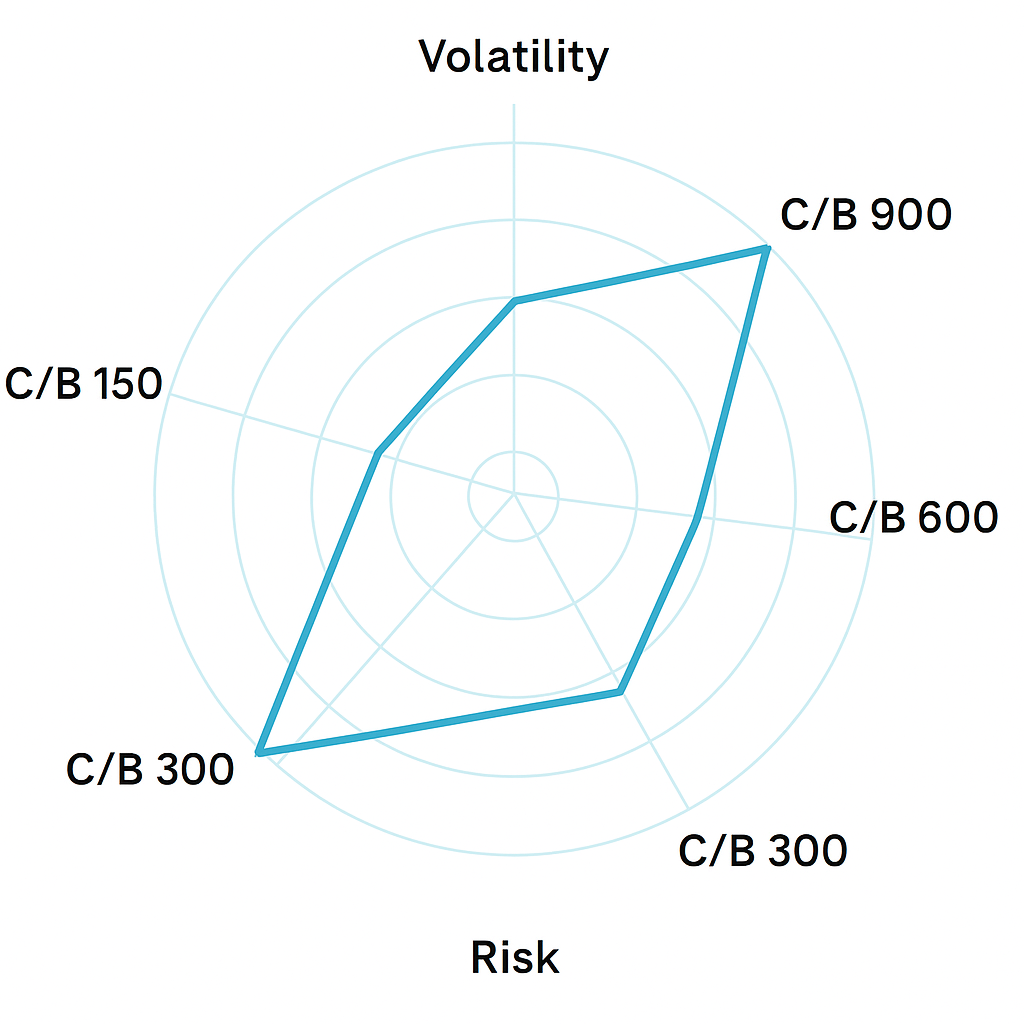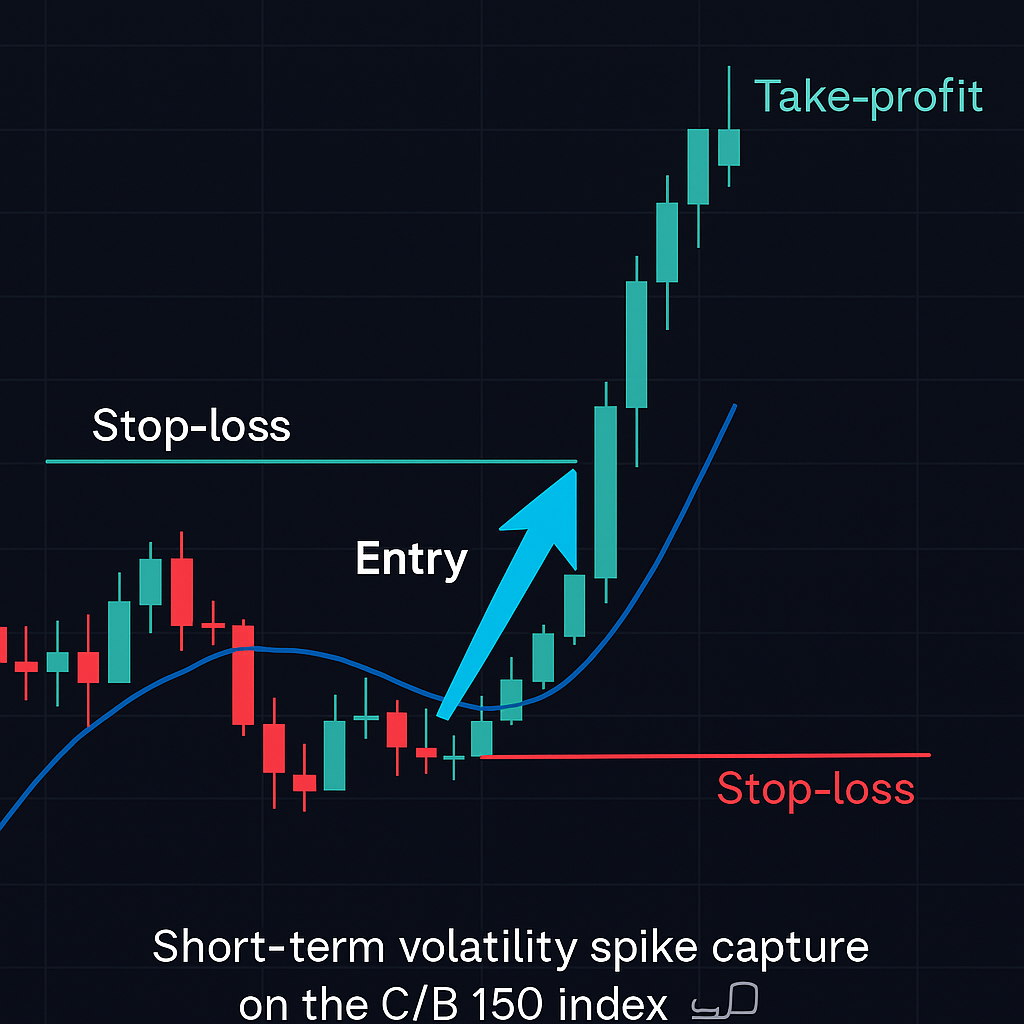Deriv slashes costs on Gold and Crash/Boom trading

Crash/Boom indices have long been a favourite among Deriv traders for their unique volatility patterns and consistent market availability. In 2025, the Crash/Boom (C/B) family expanded with the launch of C/B 150 indices launch, offering traders even more diversity in leverage, volatility, and trade frequency. These synthetic indices continue to attract active traders thanks to their 24/7 operation, mathematical transparency, and consistent volatility bursts.
Crash/Boom indices form part of Deriv’s broader synthetic suite, which also includes Volatility and Range Break indices. Together, they create a seamless volatility trading environment that allows traders to study market momentum without real-world disruptions.
Recent client insights and product performance data show that traders are increasingly focusing on C/B instruments rather than broader market correlations. With more than $10 billion in trading volume recorded within the first month of the C/B 150 launch, these new indices are rapidly becoming a cornerstone of Deriv’s synthetic ecosystem.
Quick summary
- The C/B 150 indices join Deriv’s lineup, expanding trader choice and volatility control.
- Choose from C/B 150, 300, 600, 900, and 1000 to match risk, leverage, and frequency preferences.
- C/B 150 indices reached 10 billion USD in trading volume within their first month, showing strong adoption.
- Crash/Boom indices operate continuously, unaffected by real-world liquidity or macro events.
- Explore the new indices to build diversified volatility strategies tailored to your trading style.
Why do Crash/Boom indices remain central to Deriv’s ecosystem?
Because Crash/Boom indices replicate market momentum without real-world noise, traders can study volatility behaviour more predictably. These indices simulate price spikes and momentum bursts, providing a unique way for traders to participate in volatility trading without exposure to real-world news or liquidity gaps. They are algorithm-driven and designed for fairness and transparency, with every movement generated through a random number engine.
Each index offers a distinctive volatility frequency and spike pattern:
- C/B 150: Shorter cycle spikes, moderate volatility, ideal for frequent short-term setups.
- C/B 300: Balanced volatility, suited for traders seeking controlled risk.
- C/B 600: Higher volatility, greater opportunity for larger moves.
- C/B 900: Advanced traders’ choice for managing sharper swings and leverage exposure.
- C/B 1000: Highest volatility and potential reward, recommended for seasoned traders.
This range empowers traders to customise their strategies based on volatility tolerance, leverage preference, and trading duration. The latest addition, C/B 150, fills the gap for traders who want faster cycles without the extremes of C/B 1000.

Industry sources such as Investopedia note that synthetic indices built on random number generation engines can simulate real market behaviour without being affected by liquidity or external economic events. This design allows traders to test and refine strategies in a stable, data-driven environment—precisely what Crash/Boom indices aim to deliver.
What makes the C/B 150 launch stand out?
The C/B 150 launch has been one of the most successful in Deriv’s synthetic product history. Within its first month, the index family achieved over $10 billion in trading volume, highlighting strong client interest and adoption across platforms.
Hari Vilasini, Product Manager at Deriv, explains:
“Crash/Boom indices have evolved from niche volatility products into core instruments for both manual and automated traders. The C/B 150 launch is proof that structured volatility can drive innovation.”
The C/B 150 indices were designed in response to trader demand for shorter-duration volatility bursts and more frequent spike opportunities. They bridge the gap between slower, high-volatility symbols like Boom 1000 and faster, tighter instruments like Crash 300. Early trade data shows that C/B 150 records spike intervals roughly one-third shorter than C/B 300, delivering faster trading cycles and higher engagement from short-term traders.
For algorithmic trading enthusiasts, this consistent volatility cycle allows more reliable parameter testing and high-frequency calibration. The data-driven structure behind C/B 150 supports tighter precision in order management, making it an appealing tool for traders optimising both execution and timing.

How can traders choose the right Crash/Boom index for their strategy?
Selecting the right C/B index depends on trading style and risk appetite. Deriv’s range now covers every major volatility profile, ensuring that each trader can align their system with an index that fits their goals.
By matching volatility to strategy, traders can create balanced portfolios that reflect personal tolerance and expected trade frequency. For example, a trader might pair C/B 150 for active sessions with C/B 600 for longer-term setups. Once strategies are defined, applying consistent risk metrics helps maintain volatility exposure proportional across indices.
What platforms and tools support Crash/Boom indices trading?
Crash/Boom indices are available across Deriv MT5 and Deriv Trader, ensuring accessibility for both manual and automated trading styles.
- MT5: Ideal for algorithmic systems, EAs, and detailed data testing.
- Deriv Trader: Simplified trading experience for those managing shorter trades or testing new setups.
While spreads on C/B indices may vary and are not always the lowest in the industry, Deriv focuses on pricing stability and transparency, helping traders evaluate costs. Spreads and swaps can be monitored directly in Trading specifications or within each platform’s Contract specs panel.
According to Finance Magnates’ 2025 Retail Report, Deriv’s focus on pricing stability over sheer spread competition aligns with a wider industry move toward transparent cost models. The report highlights that consistency and platform parity often matter more to traders than marginal spread differences, particularly in synthetic markets.
What strategies work best for trading the new C/B 150 indices?
The C/B 150 indices’ shorter cycles create fertile ground for strategies that combine volatility anticipation with risk control.
Approach 1 – Short-term spike capture:
- Identify low-volatility periods preceding spikes.
- Enter near moving average consolidations using tight stop-loss levels.
- Target small, consistent profits to exploit frequency over magnitude.
Approach 2 – Algorithmic volatility modelling:
- Use historical volatility cycles to estimate spike intervals.
- Backtest EA parameters for optimal entry timing and trailing logic.
- Re-optimise weekly as synthetic market conditions evolve.
Approach 3 – Multi-index diversification:
- Combine C/B 150 and C/B 600 to balance speed and payout size.
- Adjust trade sizes dynamically to maintain consistent risk-per-trade exposure.
For more in-depth techniques, visit the Crash/Boom strategies guide for step-by-step examples.

How can traders manage risk across diverse C/B instruments?
Volatility can be both an opportunity and a threat. Because each C/B index has its own pattern and leverage model, traders should adapt position sizing accordingly.
Key principles:
- Use smaller lot sizes on higher-volatility symbols (C/B 900–1000).
- Apply a fixed percentage risk (0.5–1%) per trade across all indices.
- Reassess stop-loss distances when switching between indices.
- Monitor swaps and rollover conditions for longer-term setups.
Risk-adjusted trading ensures that even with synthetic volatility, performance remains consistent and drawdowns are controlled.
How is synthetic volatility evolving at Deriv?
The expansion of the Crash/Boom family underscores Deriv’s commitment to providing continuous innovation in synthetic trading. While traditional assets such as Gold CFDs remain vital, synthetic indices cater to traders seeking structured, data-driven volatility exposure.
Clara Martinex, Senior Analyst at Finance Magnates, adds:
“Deriv’s synthetic indices continue to set a benchmark for algorithmic-friendly markets — transparent, data-driven, and unaffected by real-world liquidity shocks.”
Deriv’s future roadmap includes:
- Further optimisation of synthetic pricing structures.
- Continuous refinement of volatility algorithms to ensure fairness and transparency.
- Educational initiatives through Deriv Academy to help traders master volatility trading and platform tools.
- Cross-referencing tools within the volatility trading guide for further learning.
Insights from the CFA Institute’s 2025 research on algorithmic trading suggest that structured volatility models, like those used in Deriv’s synthetic indices, are well-suited for algorithmic testing and education. By integrating analytics and educational tools through Deriv Academy, the company supports traders in applying these global best practices to real strategies.
Why is diversity the new edge?
The Crash/Boom indices family now offers traders an unprecedented range of volatility and leverage options, from moderate to extreme. With the addition of the C/B 150 indices, Deriv provides a finely tuned environment for every trading style. Whether you prefer quick, repetitive setups or long-hold volatility strategies, the C/B ecosystem allows you to tailor your experience.
As synthetic indices continue to evolve, diversity becomes the trader’s greatest advantage. It helps you stay adaptable, data-driven, and ready for the next wave of opportunity on Deriv.
Disclaimer:
This content is not intended for EU residents. The information contained within this blog article is for educational purposes only and is not intended as financial or investment advice. The information may become outdated. No representation or warranty is given as to the accuracy or completeness of this information. We recommend you do your own research before making any trading decisions.



